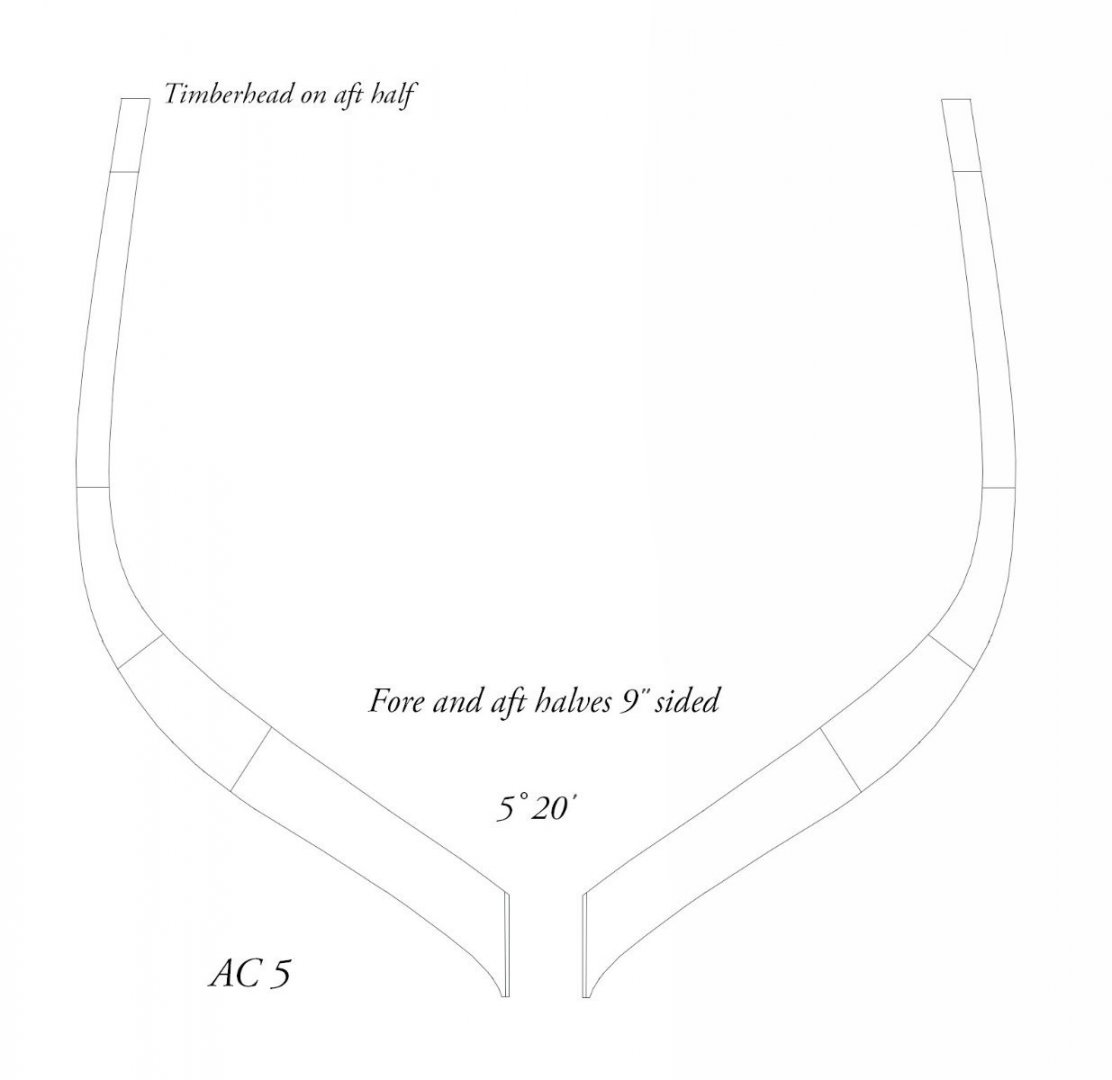-
Posts
13,288 -
Joined
-
Last visited
Content Type
Profiles
Forums
Gallery
Events
Everything posted by druxey
-
Looks like you did an excellent job of shaping the water closets, Bob. Well done!
- 146 replies
-
- Harriet Lane
- Model Shipways
-
(and 1 more)
Tagged with:
-
Bitt pins that pass through more than one deck will vary in length to fit your particular model. Unless you can build with micrometer precision, every model will vary slightly from the ideal.
- 257 replies
-
- pegasus
- Swan-class
-
(and 1 more)
Tagged with:
-
If it's any consolation, your first model is bound to include many 'oopsies',. That is part of the learning process, as is correcting those oopsies. As mentioned, you can always ask for replacement parts. Also, consider using clips and elastic bands rather than using fingers to hold things while they glue.
-

Historical Teachers of the Modeling Craft: Davis vs Underhill
druxey replied to SaltyNinja's topic in Nautical/Naval History
If their usage has been somewhat superseded by others, they are the inspiration for those that have come since, myself included. -
Well eluded, indeed! Congratulations on yet another unusual model.
- 186 replies
-
- keelless
- reverse clinker
- (and 4 more)
-
Clever tip, using masking tape to align the pairs! Thanks - I shall remember that one, Keith.
-
My ropewalk is constructed from vintage Meccano gears. It's hard to believe that the funnnel/superstructure is as small as it actually is. Super work, Eberhard.
-
Looks like that is working out well for you, Steven.
- 740 replies
-
- Tudor
- restoration
-
(and 4 more)
Tagged with:
-

HMS EURYALUS by Matiz - FINISHED - scale 1:56
druxey replied to matiz's topic in - Build logs for subjects built 1801 - 1850
Beautifully done, as usual. -
The only 'safety factor' at night is that the coamings are painted black to contrast with the surrounding deck.
-
Perhaps a safety-conscious captain might have ordered them rigged with rope 'rails'. Also, the risk of falling down the hatchway was marginally less dangerous than losing your grip on the topsail yard....
-
Welcome aboard, John.
About us
Modelshipworld - Advancing Ship Modeling through Research
SSL Secured
Your security is important for us so this Website is SSL-Secured
NRG Mailing Address
Nautical Research Guild
237 South Lincoln Street
Westmont IL, 60559-1917
Model Ship World ® and the MSW logo are Registered Trademarks, and belong to the Nautical Research Guild (United States Patent and Trademark Office: No. 6,929,264 & No. 6,929,274, registered Dec. 20, 2022)
Helpful Links
About the NRG
If you enjoy building ship models that are historically accurate as well as beautiful, then The Nautical Research Guild (NRG) is just right for you.
The Guild is a non-profit educational organization whose mission is to “Advance Ship Modeling Through Research”. We provide support to our members in their efforts to raise the quality of their model ships.
The Nautical Research Guild has published our world-renowned quarterly magazine, The Nautical Research Journal, since 1955. The pages of the Journal are full of articles by accomplished ship modelers who show you how they create those exquisite details on their models, and by maritime historians who show you the correct details to build. The Journal is available in both print and digital editions. Go to the NRG web site (www.thenrg.org) to download a complimentary digital copy of the Journal. The NRG also publishes plan sets, books and compilations of back issues of the Journal and the former Ships in Scale and Model Ship Builder magazines.





